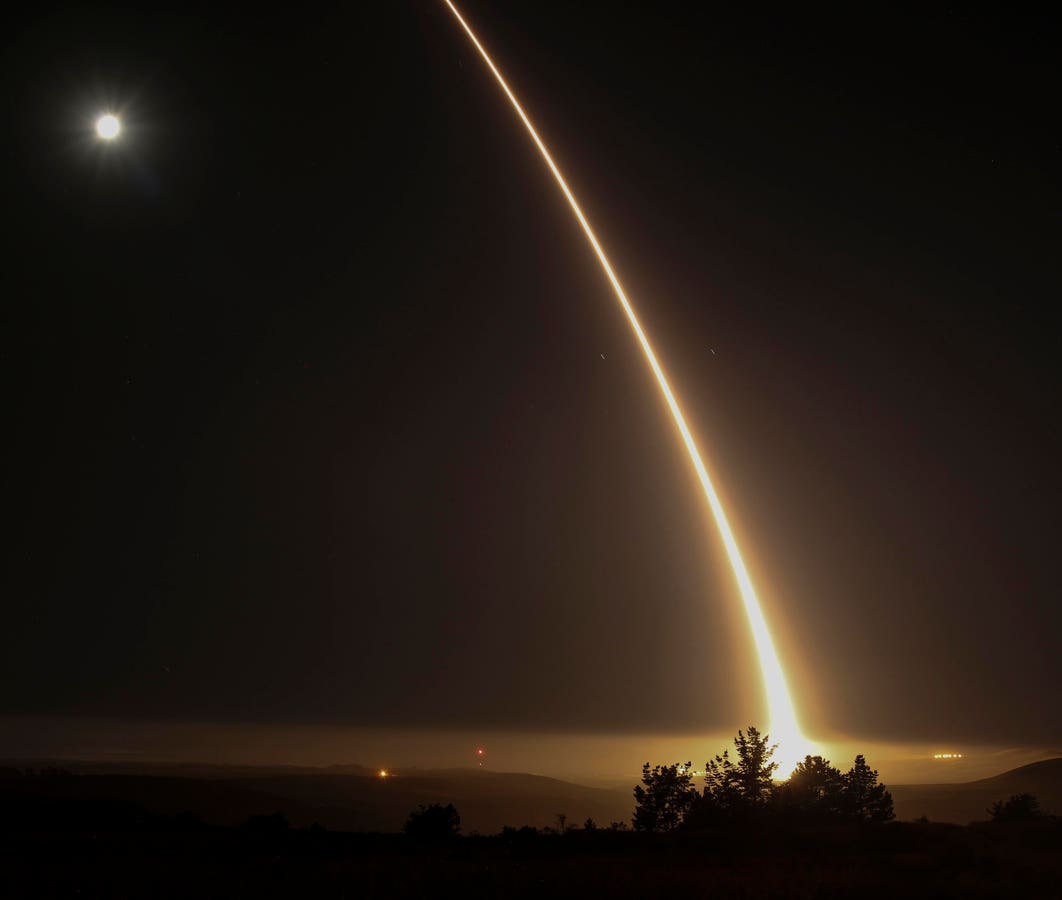The world is on fire, from Israel’s brutal, inhumane attacks on Gaza to the civil war in Sudan to Russia’s invasion of Ukraine, now two years old. The last thing we need is a new nuclear arms race. But it is already well under way, with the big three nuclear weapons states – the United States, Russia and China – allocating hundreds of billions of dollars towards building a new generation of nuclear-armed missiles, bombers, and submarines over the next decade.
The Bulletin of the Atomic Scientists summarized our current predicament when it announced earlier this year that it was keeping its “Doomsday Clock” – a symbolic measurement of how close we are to annihilating life on earth through nuclear war or environmental catastrophe – at an uncomfortably close 90 seconds to midnight:
“Ominous trends continue to point the world toward global catastrophe. The war in Ukraine and the widespread and growing reliance on nuclear weapons increase the risk of nuclear escalation. China, Russia, and the United States are all spending huge sums to expand or modernize their nuclear arsenals, adding to the ever-present danger of nuclear war through mistake or miscalculation.”
The conventional wisdom holds that nuclear buildups are designed to maintain deterrence – a balance in which no nuclear weapons state would dare to attack another for fear of being completely destroyed in return. Deterrence itself is not as stable as most experts would have us believe, dependent as it is on human judgment, imperfect risk assessments, and extremely short decision making windows upon warning of an attack.
There’s no way to precisely gauge the prospects of a nuclear exchange, but the possibility of a nuclear war launched by design or accident is real, and the job of political leaders should be to reduce the risks to the lowest possible levels. The only way to guarantee that we don’t witness a war that could kill billions of people while ending the prospects for sustaining life on earth is to get rid of nuclear weapons altogether, as called for in the Treaty on the Prohibition of Nuclear Weapons (TPNW). The treaty is now ratified by 70 nations, but so far by none of the states that possess these potentially world-ending systems.
Nuclear abolition is a long-term undertaking. In the meantime the safest course would be to reduce their numbers, forgo the production of new ones, increase crisis communications protocols among major nuclear powers, forswear first use of nuclear weapons in a crisis, and begin a serious dialogue about how to reduce and eventually eliminate the world’s nuclear arsenals. Unfortunately, things are heading in exactly the wrong direction at this moment, as embodied in a recent U.S. Congressional commission report that calls for an across-the-board nuclear weapons buildup and the actions of China and Russia, including Vladimir Putin’s nuclear threats made in the context of its war against Ukraine.
But the new nuclear arms race is about more than just wildly misguided strategic thinking or a stubborn ideology that holds fast to the absurd notion that more, “better” nuclear weapons can somehow make us safer. There is money to be made.
The economic drivers of the arms race were present from the earliest years of the nuclear age, when a fight over budgetary resources between the Navy and the Air Force sparked the creation of the nuclear triad, which called for the development of systems that could deliver a warhead from air, land or sea. And an intense lobbying effort by the Air Force and major arms contractors designed to pressure his administration into building a costly new nuclear bomber was one of the primary reasons that President Dwight D. Eisenhower warned of the dangers of the military-industrial complex.
The economic underpinnings of the global nuclear enterprise are laid bare in a new report produced jointly by PAX and the International Campaign to Abolish Nuclear Weapons (ICAN), entitled “Untenable Investments: Nuclear Weapons Producers and Their Financiers.” The report found that between January 2021 and August 2023 investors held $477 billion in shares and bonds in 24 major nuclear weapons producing firms located in six countries. In addition, nuclear arms companies received $343 billion in loans and underwriting. This private financing is in addition to the hundreds of billions that governments are spending on new nuclear weapons. The PAX/ICAN report underscores the critical importance of this private funding to the continuation of the nuclear arms race:
“For companies that build the key components needed to maintain and expand countries’ nuclear arsenals, access to private funding is crucial. As such, the banks, pension funds, asset managers and other financiers that continue to invest in or grant credit to these companies allow for the production of inhumane and indiscriminate weapons to proceed. By divesting from their business relationships with these companies, financial institutions can reduce available capital for nuclear weapon related activities and thereby be instrumental in supporting the fulfillment of the TPNW’s [nuclear ban treaty’s] objectives.”
A nuclear divestment campaign, spearheaded by Don’t Bank on the Bomb, is well under way. A 2023 report by the organization cited 55 institutions with comprehensive policies of avoiding investments in nuclear weapons producers, with dozens more imposing at least some restrictions.
The divestment campaign supplements efforts to get governments to reduce their spending on new nuclear weapons, which is skyrocketing, as evidenced by a 37% growth in cost for Northrop Grumman’s
NOC
The world is facing a lethal combination of new risks, from climate change to pandemics to unprecedented inequality and massive refugee flows. In the midst of these intersecting crises, wasting public and private resources on a new nuclear arms race is unconscionable. Pressuring financial institutions to stop supporting this madness is one way to reverse the tide and get back on track towards eliminating nuclear weapons.
Read the full article here





